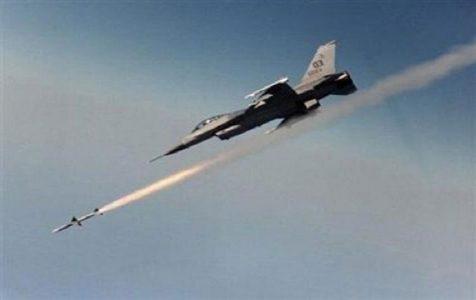
US airstrikes target Taliban targets as fighting intensifies
The United States is making good on its pledge to support Afghanistan’s security forces with military force even as U.S. and coalition troops continue to leave the country.
A U.S. official confirmed to VOA late Wednesday that U.S. forces were actively carrying out airstrikes against Taliban fighters in southern Afghanistan’s Helmand province, where fierce fighting has raged for days.
The official, who spoke on the condition of anonymity, declined to share additional details, citing the need for operational security.
The Pentagon also declined to offer specifics, though a spokesman said that “there’s still quite a bit of robust capability” at the disposal of U.S. commanders on the ground.
“To the degree we can, as we transition out, we’re going to continue to try to support Afghan national security forces in the field,” Pentagon press secretary John Kirby told reporters.
The U.S. airstrikes come as Afghan security forces have come under intense pressure from the Taliban, especially around Lashkar Gah in Helmand province, where aid groups have reported a significant increase in fighting in just the past few days.
One group, Doctors Without Borders, said on social media that civilians fleeing the fighting describe bullets pouring into their homes, forcing them to flee, sometimes without shoes or clothing.
Speaking to Agence France-Presse, one local government official said Wednesday that the U.S. airstrikes were key to stopping the Taliban advance.
“The bombing was intense,” the official, Atiqullah, said. “I have never seen such bombardment in several years.”
Afghan government forces also faced setbacks elsewhere.
Officials said Wednesday that Taliban fighters captured a district in Baghlan province in the northern part of the country and killed a police chief in Paktika province in the southeast.
Still, U.S. defense officials expressed confidence in the ability of Afghan security forces to withstand the Taliban offensive.
“The Afghan security forces are more capable than they have been in recent years,” Kirby told reporters. “They have been in the lead for quite some time.”
Afghan military officials have been equally insistent that they are up to the task.
“Currently, ANSDF [Afghan National Security and Defense Forces] 100% independently plan, command and control, and conduct the military operations,” Ministry of Defense deputy spokesman Fawad Aman told VOA’s Afghan Service on Wednesday.
“There is no support and physical presence of foreign troops in the battlefields,” Aman added.
There have been long-running concerns, however, about how long Afghan forces will be able to fend off any sort of sustained Taliban offensive without U.S. support.
“This will be a big test for the Afghan security forces,” retired U.S. Army Lieutenant General Douglas Lute told VOA’s Afghan Service.
“The Afghan security forces have relied heavily on air support — Western air support, U.S. air support … and it’s this air support that has held the Taliban at bay,” he said. “Are the Afghans able to provide their own air support? And if they cannot, or if they’re pressed, will the U.S. come to their assistance?”
While Afghan officials have been eager to tout the effectiveness of their air force, some U.S. officials have warned it may be short-lived.
The Afghan Air Force, these officials warn, remains dependent on thousands of U.S. and international contractors for maintenance — contractors set to leave with the remaining U.S. and coalition forces by early September.
“Without continued contractor support, none of the Afghan Air Force’s airframes can be sustained as combat effective for more than a few months,” the U.S. Special Inspector General for Afghanistan Reconstruction warned in a report issued last week.
U.S. defense officials say talks to ensure continued technical and logistical support are under way but caution that the issue has not yet been resolved.
There are also concerns about how Afghan security forces will adapt as the drawdown progresses and there are no longer any U.S. drones or warplanes in Afghanistan to conduct surveillance or carry out strikes in support of Afghan forces on the ground.
U.S. officials admit that bringing in such resources from “over the horizon” will take longer and will generally be “extremely difficult.”
Source: VOA News





